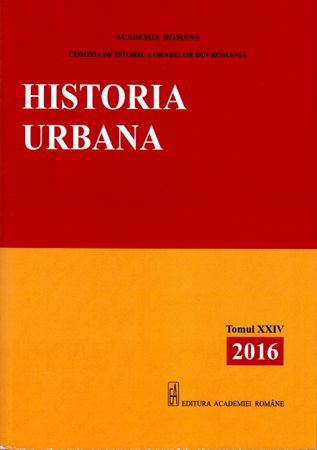Patrimoniul imobil al municipiului Satu Mare oglindit în lista monumentelor istorice
The Immovable Heritage of Satu Mare Town Reflected in the List of Historical Monuments
Author(s): Florentina Udrea (Manea)Subject(s): Architecture, Local History / Microhistory
Published by: Editura Academiei Române
Keywords: immovable heritage; historical monuments; house; church; palace; Satu Mare; architectural style;
Summary/Abstract: Combining various styles, many of them representing the stylistic guidelines of the time, buildings of the eighteenth, nineteenth, ¼ twentieth centuries of Satu Mare town impresses with aesthetic, technical achievement, grandeur and spectacle. The buildings secular or religious, are richly decorated, massive, and stately. Herman Mihály, mayor of Satu Mare town in the late nineteenth century (1895–1902) said as to buildings of a town reflects its status and constitutes the starting in the future development. Churches and palaces in Satu Mare were and are a mark of the town both and the area, not only in terms of their importance in the community, was the medieval town, and especially in terms of architecture. Adding in the nineteenth and twentieth centuries secession style make from buildings of Satu Mare made one of the strengths for which the town has more than fifty properties inscribed on the List of Historical Monuments (2010/2015) , of which more than seven buildings are historical monuments of national value (A). Urban Ensemble “Freedom Square” (SM-II-AA-05220), with all buildings on four sides, edified during the XVIII-th, XIX-th, XX-th centuries, the buildings of national value are recorded in historical monuments in Romania. Around the market are buildings – one hundred - two hundred and fifty old years - in different styles: Classic, Baroque, Gothic and Secession. This complex of buildings the most valuable are: Roman Catholic cathedral in classic style, Building of Art Museum – Vécsey House in Gothic style and Dacia Hotel (Pannónia), secession style from architect Lechner Ödön. Along with them, the classic marks are Reformed Church “with chainsˮ Roman Catholic Bishop's Palace and Fire Tower (ecclesiastical and secular buildings).
Journal: Historia Urbana
- Issue Year: XXIV/2016
- Issue No: 24
- Page Range: 165-184
- Page Count: 20
- Language: Romanian
- Content File-PDF

